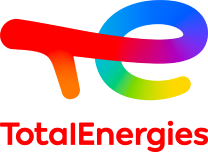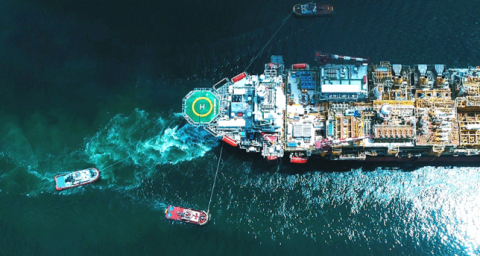As a multi-energy company integrated across the oil and gas value chain, we are committed to providing energy that is more affordable, more reliable, cleaner and accessible to as many people as possible. To put this ambition into practice and become the responsible energy major in today’s complex environment, we rely on our key strengths, working every day to develop a diversified portfolio and focusing particularly on our expertise in deep offshore production and liquefied natural gas (LNG).
A global, diversified and balanced oil and gas portfolio
At TotalEnergies, close to 13,000 people help supply our customers with the energy they need through their daily commitment to oil and gas exploration and production. In 2019, our teams produced more than 3 million barrels of oil equivalent per day.
We operate in all the main oil and gas production regions, from Asia to Africa, Russia, the Middle East, the United States and the North Sea. We leverage cutting-edge technologies for the complex onshore and offshore oil and gas projects that we run all over the world.
In addition, as part of our ambition to prepare the future of energy, we are renewing our portfolio by developing our exploration strategy. Today, we have a solid, diversified portfolio of proven and probable reserves1 representing around 20 years of reserve life at constant production levels. To steer exploration operations toward the most promising areas, we capitalize on 3D and 4D modeling technologies, which help us assess the potential of reservoirs as accurately as possible and more effectively plan ahead for seismic risks.
1 Proven reserves of oil and gas are reserves that have been estimated with reasonable certainty, since fields have already been discovered and their potential has been assessed. Probable reserves are estimated based on proven reserves and the probability of finding more elsewhere. Proven and probable reserves correspond to the sum of proven reserves and probable reserves.
Expertise across the entire LNG chain
The proportion of natural gas in the energy mix is expected to stay high over the next two decades, meeting around a quarter of global energy demand1. Gas emits half the greenhouse gas of coal in power generation, making it an immediate, practical response to global warming. When converted to liquefied natural gas (LNG), it can be easily transported and delivered as closely as possible to consumer markets. It is then regasified before being fed into the distribution network. Growth in LNG demand is strong and expected to average some 5% per year for the 2015-2040 period.
We are pioneers in LNG, which we have been producing for more than 40 years, and are now the world No. 2 in this resource. In fact, it is a key part of our strategy. We operate across the entire LNG value chain, from production and processing to trading, shipping and distribution, and use our liquefaction assets and regasification capacities across the world to supply all the main consumption areas.
To continue developing our portfolio and meet our sales target of 50 million metric tons by 2025, we made final investment decisions in major projects in 2019: Mozambique LNG and NLNG Train 7 in Nigeria. Our many supply sources and delivery points around the world mean that we can guarantee our customers flexibility and maximum competitiveness.
Further down the supply chain, to bring LNG to new markets, we are prepared to invest in new regasification terminals and power plants. We are working on floating storage regasification unit (FSRU) projects, which provide quick, cost-effective and flexible access to LNG. We also market natural gas thanks to our acquisitions since 2018 of various suppliers in the Residential sector (TotalEnergies in France, Lampiris in Belgium and the Spanish portfolio of Energias de Portugal). In addition, we joined forces with the privately owned Adani Group in 2018 to develop a broad energy offering for the Indian market. The alliance covers the importation and regasification of LNG for sale to industrial and corporate customers.
Lastly, we work for cleaner energy by promoting LNG in maritime and ground transportation. For example, we use tankers with engines that are partly fueled by the LNG they transport and we are developing LNG marine fuel and natural gas fuel for vehicles.
1 According to the IEA’s Sustainable Development scenario and TotalEnergies’s Rupture scenario.
LONGSTANDING expertise in deep offshore





